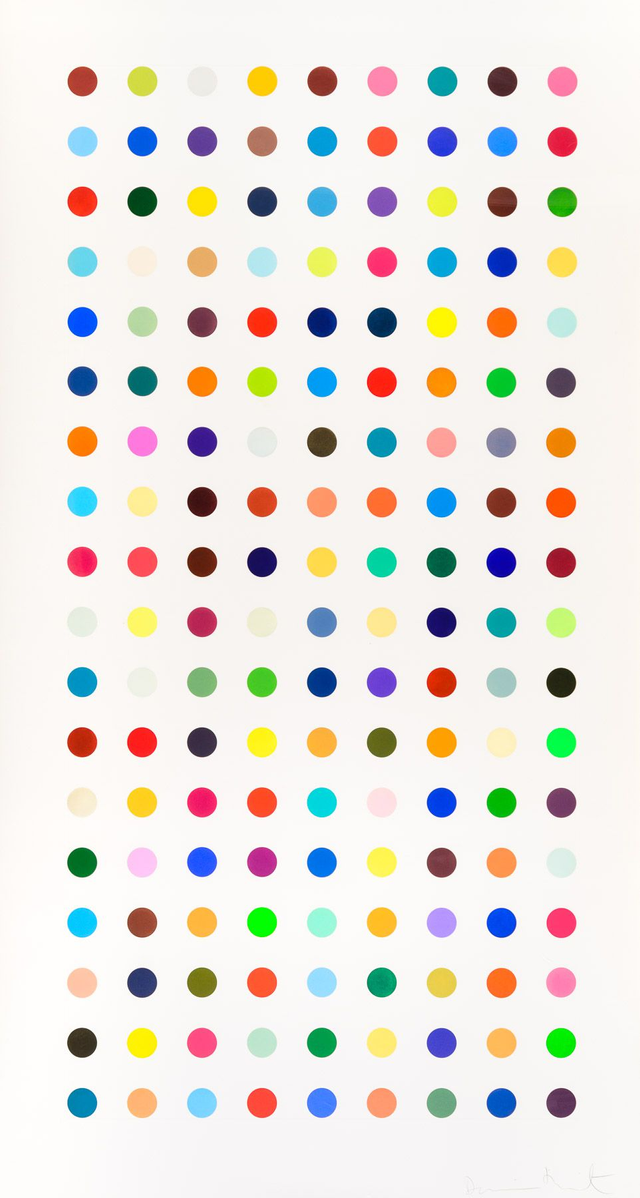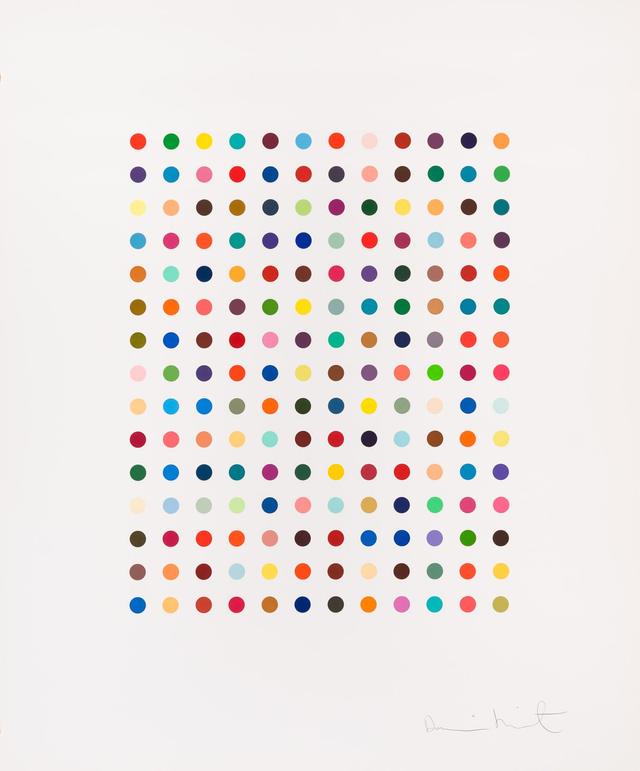Damien Hirst
Damien Hirst's diverse practice spanning installations, sculpture, painting, and drawing has consistently aimed to challenge the intersections of art, science, and popular culture. His boundless energy, inventive spirit, and consistently captivating work have established him as a leading artist of his era.
Biography of Damien Hirst
Born in 1965 in Bristol, UK, Damien Hirst currently resides and works in London and Devon. In 1988, while studying at Goldsmiths College in London, Hirst curated Freeze, a rotating exhibition in three parts showcasing his and his fellow students' work. This exhibition marked the debut of the artists who would later be recognized as the Young British Artists, or YBAs. Their approach was defined by a mix of entrepreneurial and oppositional attitudes, the use of found materials, and an attraction to shock and spectacle. In the final phase of Freeze, Hirst featured two of his "Spot" paintings, directly painted onto the wall.
The "Spot" paintings (1986–) now number over a thousand, displaying multicolored spots on white or near-white backgrounds, meticulously painted by hand in glossy house paint. Through these pieces, Hirst aimed to paint mechanically yet embrace the subtle imperfections of the artist's touch. Similar to many of Hirst's series, the "Spot" paintings evoke diverse psychological and perceptual contrasts: they are simultaneously soothing and unsettling, beautiful and mundane.
One subseries, the "Pharmaceutical" paintings (1986–2011), displays evenly spaced, multicolored circles. This title connects these works to the "medicine cabinets" (1988–2012) and "Visual Candy" paintings (1993–95), all of which delve into the cultural significance of prescription drugs, their advertising, and the myriad promises made to consumers. The "medicine cabinets" contain the empty packaging of various medications, emphasizing the minimalist design of the boxes and plastic containers. The "Visual Candy" paintings take the notion of false promises even further. Drawing from movements such as Impressionism, Abstract Expressionism, and Pop art, they are vibrant, colorful paintings with euphoric, perhaps ironic, titles like "Happy Happy Happy" (1994), "Wowee Zowee" (1993), and "Super Silly Fun" (1993).
In 1991, Hirst unveiled "The Physical Impossibility of Death in the Mind of Someone Living": a fourteen-foot tiger shark preserved in a tank of formaldehyde. This piece, part of the "Natural History" series (1991–), has become an iconic symbol of contemporary art and showcases Hirst's fascination with merging art and science. The "Natural History" series features additional taxidermied animals such as sheep, cows, a zebra, a dove, and even a "unicorn"—some of which are dissected or flayed.
During the same year in London, Hirst introduced" In and Out of Love (White Paintings and Live Butterflies)," an exhibition displaying real pupae affixed to white canvases. These pupae hatched within the gallery, releasing live butterflies into the environment.
Since the early 2000s, Hirst has created ambitious and captivating works, showcasing a wide range of projects. These include the kaleidoscopic butterfly paintings (2001–08), where thousands of butterfly wings are arranged in intricate geometric patterns on painted canvases. Another notable piece is "For the Love of God" (2007), a platinum cast of a human skull adorned with 8,601 diamonds.
Hirst's first significant retrospective, titled "The Agony and the Ecstasy," was held at the Museo Archeologico Nazionale in Naples, Italy, in 2004. In 2012, he received further recognition with a major retrospective at Tate Modern in London.
In 2015, Hirst fulfilled a long-standing ambition by opening the Newport Street Gallery in London, offering the public a glimpse into his extensive art collection.
The artist's contributions to the art world have been showcased in numerous group exhibitions, including "Into Me / Out of Me" at P.S.1 Contemporary Art Center, New York (2006), "In-A-Gadda-Da-Vida" at Tate Britain, and the 50th Venice Biennale (2003), as well as "Century City" at Tate Modern (2001). Hirst was awarded the DAAD fellowship in Berlin in 1994 and the Turner Prize in 1995.
Years:
Born in 1965
Country:
United Kingdom, Bristol
Gallery:

